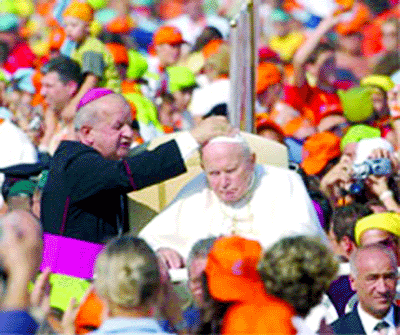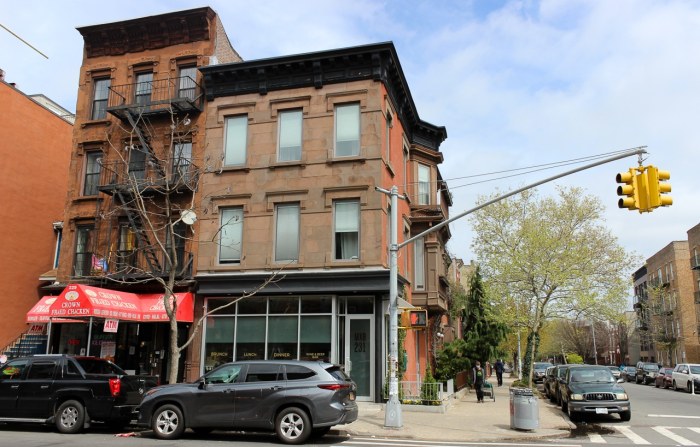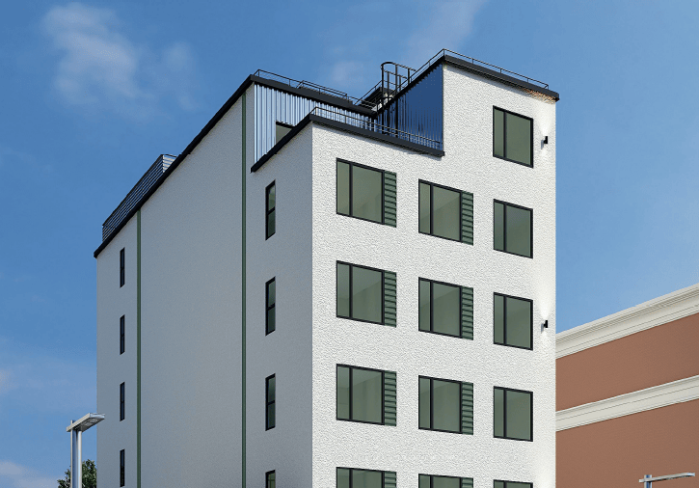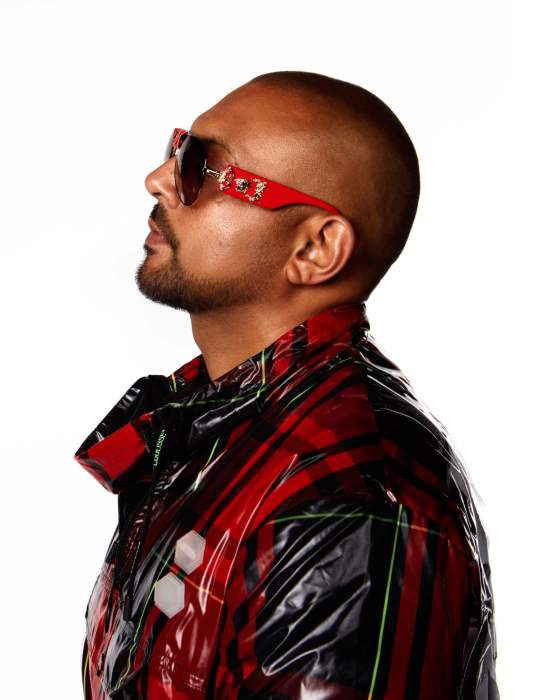John Paul II’s hostility to gay rights did not extinguish aspirations of some faithful
Raymond Lefebvre is a Catholic priest who has left the Church but continues to serve Mass. This past Sunday, officiating at a service for Dignity, the gay Catholic group, at St. John’s Episcopal Church on Waverly Place in the West Village, Lefebvre spoke of the death of Pope John Paul II the day before with respect, but without the warmth of friendship.
Lefebvre mentioned the pope only briefly in a homily that paid particular tribute to gay men who had “died alone and forgotten.”
As pulpits and televisions worldwide reverberated with lengthy tributes to the late pope, Lefebvre said later he did not care to dwell on the papal legacy of a man whose 26-year tenure as head of the Catholic Church stigmatized homosexuality and even denied gay Catholic groups such as Dignity the use of church property. Dignity New York has been meeting and conducting mass at St. John’s since the pope sanctioned the expulsion of the group by the late Cardinal John O’Connor in the 1980s.
Lefebvre and other men, who were ordained and served for years as priests, over time came to feel that the promise of reform born in the 1960s was being betrayed by John Paul II. He left his Franciscan Order to become a secular social worker, while remaining a Catholic and what he describes as a priest in exile.
“I had trouble telling families in New York City that contraception was bad,” Lefebvre said. “They could end up with 15 kids. Things are expensive enough.”
Waiting for change from the institution, while trying to create the change they wish to see, many gay Catholics cannot bring themselves to abandon what Brendan Fay, a Queens resident who is a leader in the Catholic gay community, called “a love of our church and our community faith.”
Gay men and lesbians who remain Catholic but refuse to think of themselves as “evil”—the word used to describe homosexuality in papal encyclicals since 1986—are often rigorous amateur theologians who “rely on conscience and experience within community as the highest authority” in their faith, as Jeffrey Stone, a Dignity member who lives in Manhattan, said.
Stone and Catholics like him reason that the reinforced hierarchical model that characterized the papacy of John Paul II is contrary to the parish-on-up model which views the Church as a community served and led by the curia, not ruled by them. That reformist view is rooted in Vatican II, a gathering called by Pope John XXIII in the early 1960s, which in some respects transformed the church. Reforms took place that replaced the Latin liturgy with the vernacular, rearranged altars so priests would face the congregation and allowed parishioners to play a bigger role in the functions of church life.
At that early date, of course, the issue of gay identity did not surface, nor did the Second Vatican Council address the disparate role played by men and women in the Catholic hierarchy. The hope that the church might begin to make some accommodation with the social revolutions of the last three decades—regarding gays or women—was largely curtailed under John Paul II.
The pope’s death puts “the future of the Catholic Church up for grabs,” Stone argued, and leaves open the possibility the church might embrace more liberal stances to stave further erosion of seminary enrollment and church attendance, which has declined consistently despite the rise in the number of Americans who say they are Catholic.
Others on hand on Sunday were less optimistic than Stone, noting that the College of Cardinals which will elect the next pope is comprised of an especially conservative bunch, who may or may not respond to popular grumblings among bishops, priests, nuns and parishioners for further reform.
“It pays off for them to be ultra-conservative, so they’ll keep doing it and get worse,” said a gay man who refused to share his name. “John Paul was more interested in winning converts in the Third World than appeasing the new world.”
But Fay challenged the notion that greater orientation to the developing world necessarily moves the church in a conservative direction, pointing to the example of the mujeristas, feminist theologians in Latin America, and other liberation theology movements that he said point up a more complex set of perspectives arising from Catholicism outside of Europe and the U.S.
Other prominent Catholics commenting on the pope’s death were specific in pointing to the failings of John Paul II’s papacy.
“Many women are dying of HIV/AIDS because their Catholic partners did not wear condoms,” said Dr. Mary Hunt, a lesbian theologian with WATER, the Women’s Alliance for Theology, Ethics and Ritual, a 22-year-old group in Silver Spring, Maryland. “ Many children were sexually abused because the Catholic Church condemns homosexuality thus creating a climate of fear and duplicity that fosters abuse. Many lesbian women and gay men have suffered psychologically and spiritually from the institutional Church’s insistence on anti-gay theology.”
Father Bernard Lynch, an Irish-born gay priest who was active with Dignity in New York in the 1980s and now does AIDS work in London, recalled the first official statement that came out of the Vatican about the disease, from Msgr. John Foley, who is now an archbishop.
“It was GRID then [for Gay-Related Immuno-Deficiency] and he called it ‘a natural result of unnatural acts,’” Lynch recalled this week. “I’ll never forget that quote. We were all looking for compassion…. This stuff came at the height of the pandemic. We asked for bread and we got a stone.”
Other gay Catholics, though, recognize that the obstacles to progress on gay issues are much deeper than the question of who is the pope.
“There has always been a tremendous fear in dealing with human sexuality—particularly homosexuality—among clergy. That is because many of the church leaders are themselves closeted gay men,” said Jim Morris a priest on leave from the Diocese of Brooklyn. “Their fear of dealing with the gay community is really a fear of their own sexuality.”
Even as Dignity and like-minded Catholics struggle to claim a place within the church, others quietly keep their affiliation and suffer repression and guilt because they could not resist or challenge the systematic theology and sociology of John Paul II. In some cases this has led to self-loathing, mental illness and worse.
In 1998 in Rome, Alfredo Ormando committed suicide by self-immolation as an act of protest. The notes he left give a sense of the alienation he felt:
“The monster is leaving so as no longer to bring you shame… I’m taking my life because my family and society don’t accept me,” he wrote. “They will think I’m a lunatic because I chose the Vatican to set myself on fire. I hope they’ll understand the message I want to leave: it is a form of protest against the Church that demonizes homosexuality—and at the same time all of nature, because homosexuality is a child of Mother Nature.”
A Church spokesman at the time tried to disassociate the man’s act with Catholic teaching, and blamed his suicide on family issues.
—Reports compiled by
Gay City News staff.
gaycitynews.com


































